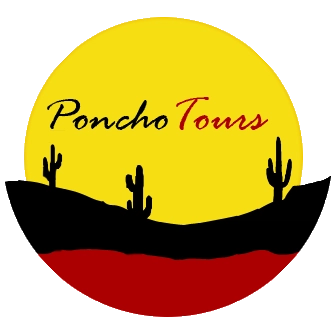North West Argentina is particularly rich in pre-Hispanic history, as it was one of the most heavily populated parts of the continent when the Spanish arrived in the 16th century.
The formation of the Andes between 12 and 15 million years ago created a huge range of different eco-systems: take Jujuy province on the border with southern Bolivia and north Chile, where the distance as the crow flies from the Altiplano mountain plateau to the sub-tropical cloud forest of Calilegua is roughly 150km.
A tour we think you'll love
Rainfall in Calilegua national park can reach 1,800mm per year, while it can be as low as 50mm in the Salinas Grandes of the high altitude Puna, and between 100 to 250mm in the Quebrada de Humahuaca in between.
Pre-Hispanic tribes crossed mainly from east to west and vice versa, creating the Camino del Sal salt route trails, the central valley becoming the focus of trade and meeting places for tribes.
A vestige of this still remains in La Manka market still held in La Quiaca, on the border with Bolivia, on the third weekend of October.
From the 14th century onwards, the Inca came down from Peru in the north to control an area as far south as Mendoza, and when the Spanish conquistadores arrived, many locals took refuge in other parts of the empire: which is how the body of a highborn Inca came to be found in the pukara of Tilcara in the Quebrada de Humahuaca.
The woman, aged around 30, was found in a kneeling position, surrounded by what appear to be offerings from different parts of the Inca empire: jewellery, metal, ceramics and the bones of a lizard which may have had ritual or curative properties.
Scientists from CONICET (Argentina’s department of technical and scientific investigation) also found animal bones, one of which could have been used as a musical instrument, or as a pipe for smoking hallucinogenic drugs (another important ritual).
They even discovered remains of guinea pig, still a commonly served delicacy in Peru, in the woman’s abdomen.
Lead archaeologist Dr Clarisa Otero thinks this was a woman of “high social prestige” who may have fled her home in Peru after the fall of the Inca empire.
“We suspect that her early years weren’t spent in the Quebrada, but due to the type of offerings left, and the position in which her body was laid, we think she had an important role in the community. Perhaps this woman formed part of an elite group from another region in Tawantinsuyu who came to the Quebrada fleeing the Spaniards.”
Tawantinsuyu is the quechua name for the whole of the Inca empire: the southern part which included Argentina and Chile was called Collasuyu.
While the Inca empire was more or less completely extinguished between 1532 and 1572, resistance in the Quebrada de Humahuaca continued until 1599, while it took until 1665 for the last indigenous tribes of the Valles Calchaquies further south to be overcome.
The body, unearthed in November 2016, was placed not in the main cemetery, but in a raised patio, another indication that the deceased woman may have had high status.
And part of the skeleton is missing, suggesting that the human remains may have been moved after death. In pre-Hispanic times, the dead were believed to still be with us, and often their bodies would be disinterred to take part in religious rituals and political decisions.
Traces of this tradition continue today on the Day of the Dead when locals cook their ancestors’ favourite food on November 1st and 2nd.
The pukara, or fort, of Tilcara is included in our Essential Humahuaca tour, among others. It is one of those sites that (to our modern eyes) was incredibly badly excavated in the early 20th century, when the mode was to rebuild rather than preserve. The stone houses with adobe and cactus wood roofs look as if they were built last week.
Worse still, a ridiculous pyramid was later added to honour the archaeologists who excavated, and many archaeological remains were swept aside to make a new road up to the top, which is no longer used.
Despite the bodged initial restoration, excavations continue, as they do in other sites like Quilmes in the Valles Calchaquies, Tastil in the Quebrada del Toro and Shinkal, the capital of Inca Collasuyu.
And in the absence of any written records before the Spanish arrived, in Latin America, archaeology is even more important than usual in discovering the rich tapestry of the past.
There is a good visual infograph about the find of the Inca princess here (in Spanish).






